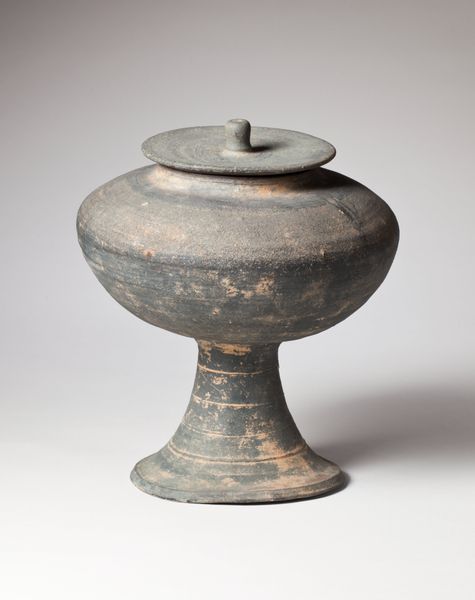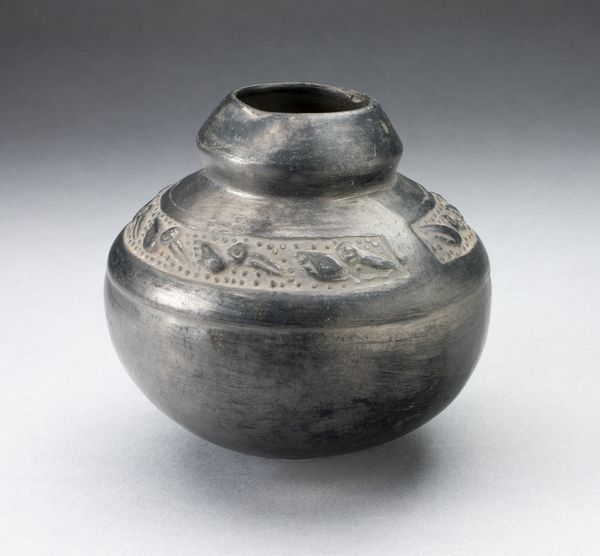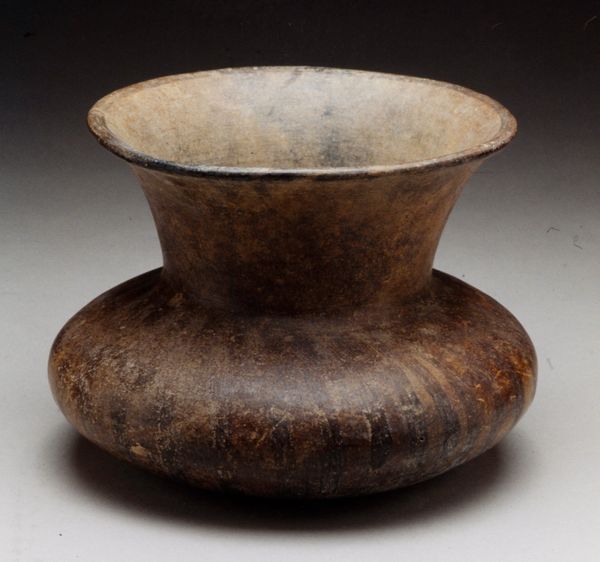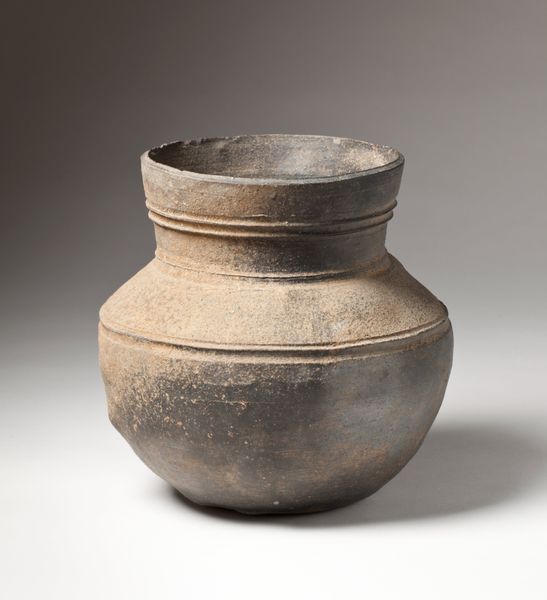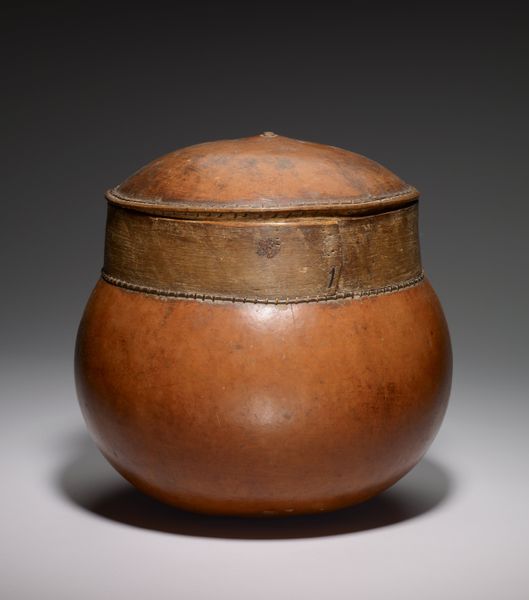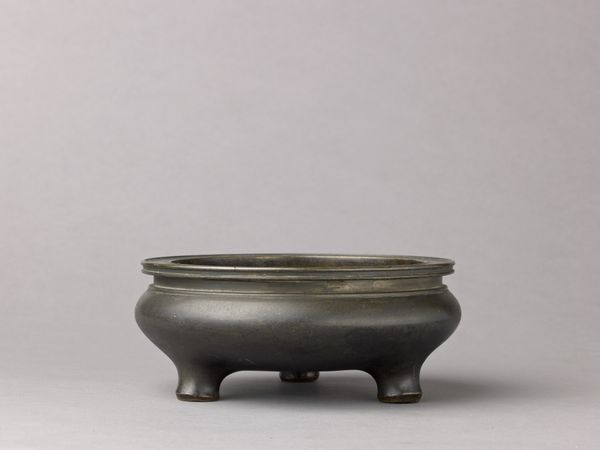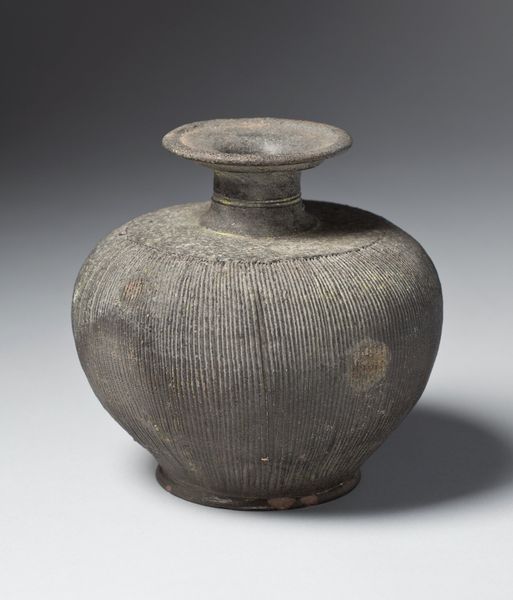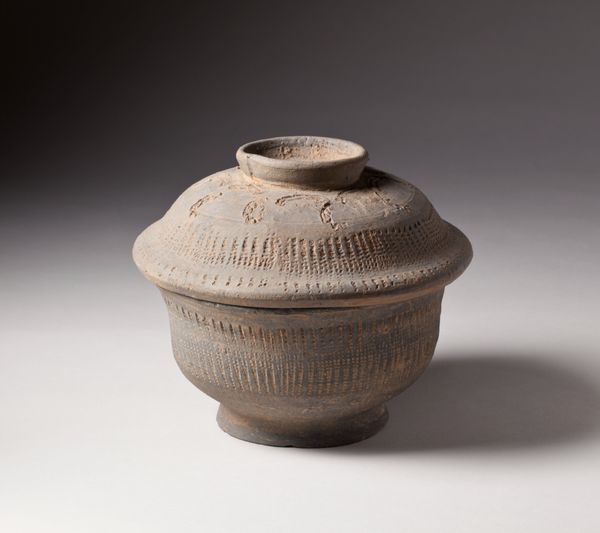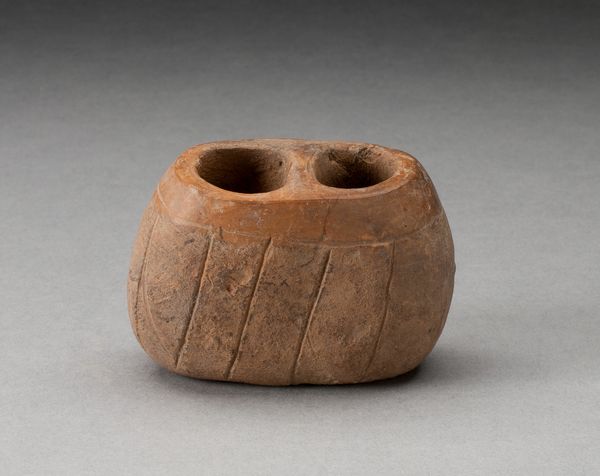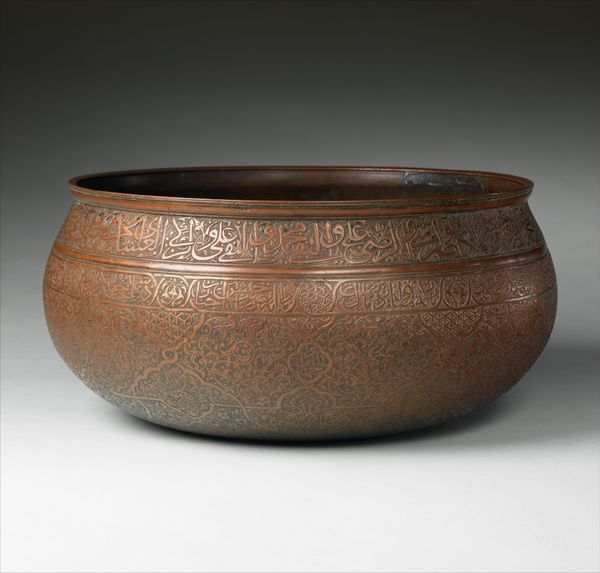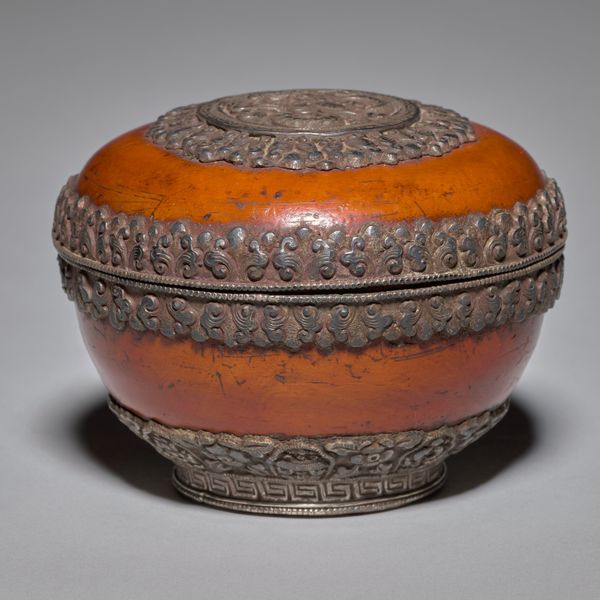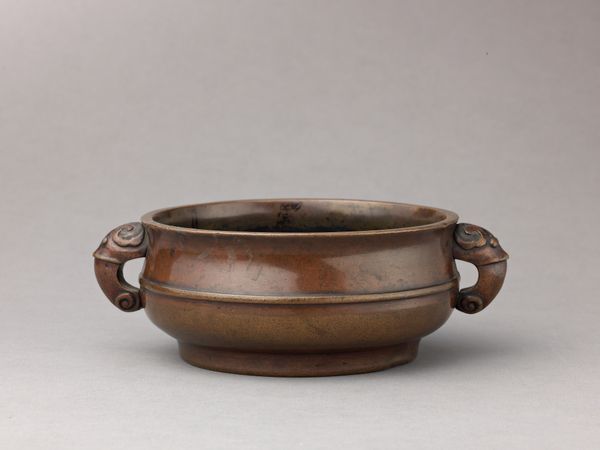
Small Jar with Perforated Foot and Stamped and Incised Designs c. late 6th - early 7th century
0:00
0:00
ceramic, earthenware
#
asian-art
#
ceramic
#
earthenware
#
ceramic
Dimensions: 3 11/16 × 8 5/16 × 8 5/16 in. (9.37 × 21.11 × 21.11 cm)
Copyright: Public Domain
Editor: This is an earthenware jar from the late 6th to early 7th century. It has this intriguing perforated foot and the surface is covered with stamped and incised designs. I’m struck by how tactile and elemental it feels, almost like something pulled straight from the earth. What story does this jar tell from your perspective? Curator: I see this not just as a jar, but as a document of labor. Consider the process: the gathering of clay, the fashioning by hand, the firing in a kiln likely fueled by gathered wood. Each step reveals the interaction between humans and their environment. The incised decorations – what tools were used? And by whom? It embodies practical skills and an awareness of material resources, doesn't it? Editor: Absolutely. Thinking about it that way makes me consider how its function shapes the design. Was this used for daily life or was it intended for ritualistic purposes? Curator: Its functionality, of course, determines much. The perforation suggests a possible role in steaming or heating, but regardless, such an object, made by human hands, tells us a lot about their social conditions and knowledge of ceramic production and material control. Can you imagine the maker and his potential role within their society? Editor: It's amazing to think that something so seemingly simple can offer so much insight. I never considered pottery as evidence of cultural knowledge of production. Curator: It disrupts the hierarchy, doesn't it? So often, these "functional" items are cast aside when it comes to understanding the full picture. This shows it. Materials are important. Process is important. Editor: You're right, viewing this jar through a materialist lens provides such a rich perspective on history and production. I will never see these simple objects the same again. Curator: Precisely! These humble pieces whisper invaluable truths about the labour and materials behind our culture, enriching our understanding of ancient practices.
Comments
minneapolisinstituteofart almost 2 years ago
⋮
Uneven mottling along the shoulders of this vase is the result of ash that settled during the firing process to create a natural glaze. The rows of round stamped designs alternating with rows of incised geometric patterns are typical of stoneware produced during the Unified Silla period (668–935).
Join the conversation
Join millions of artists and users on Artera today and experience the ultimate creative platform.

